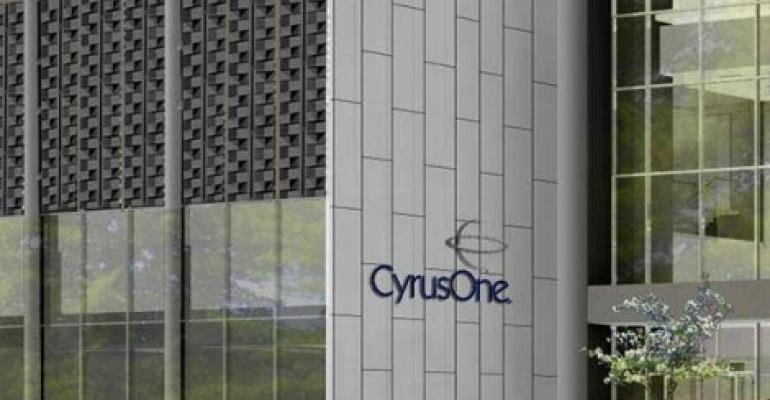CyrusOne recently closed its $400 million acquisition of Cervalis, marking the data center provider's official entrance into the New York data center market.
While the national provider acquired Cervalis primarily to get into New York, the rationale is multi-faceted, CyrusOne CEO Gary Wojtaszek said. The deal made strategic sense in terms of customers and services as well.
The acquisition instantly grows its financial services customer base and puts it in position to extend what Cervalis does to other attractive segments. Wojtaszek points to an opportunity in media in particular.
“[Cervalis is] our beachhead,” he said. “Once we expand out that platform, it will enable us to sell to other companies there, including media that haven’t really outsourced much space yet. Media will be a much bigger market in the future.”
What Cervalis has done in the New York data center market with financial services customers is similar to what CyrusOne accomplished in Texas with the oil-and-gas segment. Closing the deal means CyrusOne’s financial services customer segment is now as large as the oil-and-gas segment, said Wojtaszek, with 80 percent of Cervalis customers in financial services.
Matching the size of the oil-and-gas customer segment is no easy feat. CyrusOne is known for being particularly strong in this sector, given its extensive footprint in Texas. While the energy sector’s outsourcing reportedly remains healthy, dropping oil prices did raise some concern over the effect on colo providers that rely on energy-sector customers for big portions of their revenue. The acquisition protects further against potential sensitivity.
The big national data center providers have focused on diversifying their clientele and markets to protect against market sensitivity. Competitor QTS sought to diversify its revenue as well, recently acquiring Carpathia, with a large portion of the rationale being Carpathia's strength in the federal space.
The opportunity among existing customers is also sizable. The average enterprise setup uses three data centers, said Wojtaszek: two nearby data centers in an active-active setup and one located 100-300 miles away for disaster recovery. Over 60 percent of CyrusOne’s revenue comes from customers in multiple markets.
One example of growth among existing customers is the first phase in recently opened Ashburn, Virginia, data center. The first phase was 70 percent sold out by the time of opening, with most of this business coming from existing customers in CyrusOne’s portfolio, said Wojtaszek.
Opportunity to Extend Services
Where the two companies are different is CyrusOne performs much bigger deals, while Cervalis offers managed services. There will be some cross-pollination here because of acquisition. Cervalis will now be able to bring on bigger deals, while CyrusOne will look to bring on some of Cervalis’ managed services across the platform– so long as they make sense.
There’s a reason CyrusOne didn’t take the sizable managed services business at Cincinnati Bell when it spun off, said Wojtaszek. Telecom Cincinnati Bell acquired CyrusOne in 2010 for $525 million with CyrusOne spinning off two years later.
“We intentionally left that business with Cincinnati instead of IPOing (Initial Public Offering) a combined business,” said Wojtaszek. The reason, he said, was that product set was difficult to manage.
It will not seek to bring advanced managed services across the portfolio, despite Cervalis' strength here. Instead, CyrusOne will look at “low-order-type services that all customers require that we can go across the platform with,” said Wojtaszek.
“The trick is to focus in on key products customers really need and are willing to pay for because of a convenience factor,” said Wojtaszek. “The challenge is to not become the person that does everything for the customer. Your products get so skewed and big and unwieldy, and it’s really difficult to manage that.”
Interconnection and connectivity, monitoring and managed storage were mentioned as potential managed services.
The Cervalis deal makes a lot of sense from a strategic perspective, said Wojtaszek. From a financial perspective it is immediately earnings accretive, with Cervalis 6 percent accretive to the quarter.
Cervalis gives CyrusOne more than 500,000 gross square feet of space, including more than 130,000 colocation square feet and over 100,000 square feet of work area recovery space in the New York area. Cervalis and its four data centers are more than a geographical play, the company holding wider strategic importance going forward.
The fact that the Cervalis deal was not just a one-off facility but four connected data centers made the acquisition appealing, said Wojtaszek.“What they do in terms of building, managing, and service customers at a data center level, it’s almost exactly what we do.”
Major Money Moves
The company reported last week that it has also expanded its credit facility from $350 million to $950 million. The credit facility is available to finance all or part of the acquisition and gives the company in excess of $200 million of liquidity between available capacity, cash, and cash equivalents.
CyrusOne also issued a new round of equity, raising about $340 million, and issued another $100 million in high-yield bonds. “We raised all of that for two reasons,” said Wojtaszek. “We wanted to fund the acquisition of Cervalis and provide enough liquidity to form all capital plans for the next two years.”
The company is in expansion mode. “We have construction projects underway in every single market that we’re in,” said Wojtaszek. This includes projects in Arizona, Texas, Virginia, and Ohio.
“The next expansion is in the New York metro as we bring on additional capacity and build a bigger company,” said Wojtaszek. “Our goal is to triple the size of that business.”





